
"All the patients said that they were pleased with the acupuncture that they received, and about 75% said that they would refer other people going through BCG to acupuncture," says Sarah P. Psutka, MD, MS.

"All the patients said that they were pleased with the acupuncture that they received, and about 75% said that they would refer other people going through BCG to acupuncture," says Sarah P. Psutka, MD, MS.

"There was a striking decreased survival for patients who had sarcomatoid histology compared to the ones who had the classic variant urothelial histology," says Rohan Garje, MD.
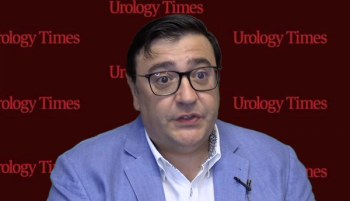
David Olmos, MBBS, MSc, PhD, discusses research presented at the ASCO 2023 Annual Meeting assessing outcomes with first-line novel hormonal therapy or taxane therapy in metastatic castration-resistant prostate cancer based on patients' BRCA/HRR status.

"The overall survival, Kaplan Meier curves, are maintained with a hazard ratio of 0.79 for the intent-to-treat patient population of lenvatinib/pembrolizumab versus sunitinib," said Thomas E. Hutson, DO, PharmD, FACP.

"Our research focused on the outcomes at 6 months, [and we] were looking at disease recurrence and hernia occurrence," says Jennifer Nguyen.
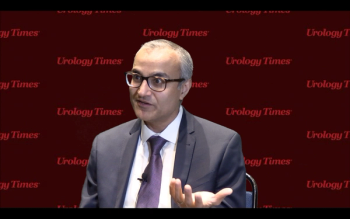
"About 80% of the patients who underwent treatment showed a very strong reduction in tryptase levels," says Praveen Thumbikat, DVM, PhD.

“There are a lot of social determinants of health as it relates to urge urinary incontinence,” says Joseph Kim, MD.

"Here, we've lowered the age to initiate screening to 45 to 50 years," says Badrinath R. Konety, MD, MBA.
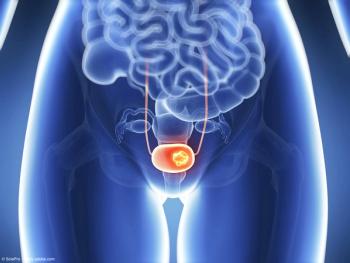
In this episode, Ashish M. Kamat, MD, MBBS, highlights the state of bladder cancer care in recognition of Bladder Cancer Awareness Month.
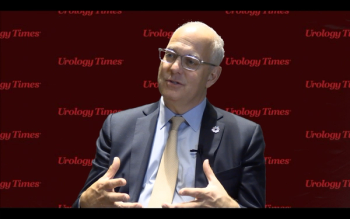
"Even though most urologists who do retroperitoneal surgery do it for posterior tumors, you actually can do it equally well with as equally good success for an anterior tumor," says Michael D. Stifelman, MD.

"Our main finding was that participants who experienced food insecurity in the past year were at 55% increased odds of reporting at least 1 episode of urge urinary incontinence in the past month, compared with those who have not experienced food insecurity," says Joseph Kim, MD.

"We found out the using IRIS intraoperatively during partial nephrectomy does help us with preserving renal parenchyma," says Teona Iarajuli.

"I think there's a lot of interest now on intraoperative navigation," says Jihad Kaouk, MD.

“The take-home message is that as a practicing urologist, you should be treating genitourinary syndrome of menopause and giving any woman over 45 vaginal hormones, whether in the form of vaginal estrogen or vaginal DHEA,” says Rachel S. Rubin, MD.

Gopal H. Badlani, MD, and Steven A. Kaplan, MD, discuss some of the notable abstracts in benign urology that were presented at the 2023 AUA Annual Meeting.

“We really wanted to give the general urologist the tools to go back to the clinic the next day and say, "I know how to prescribe this. I know where to prescribe it. I know the cheapest options. I know the best deals around and I know how to talk to patients about the risks and the benefits,” says Rachel S. Rubin, MD.

The data were presented at the 2023 American Urological Association Annual Meeting in Chicago, Illinois.

Anthony V. D’Amico, MD, PhD, discusses key factors that determine his radiotherapy treatment selection in the management of patients following radical prostatectomy.

“PSMA-PET technology is helping urologists think about how to individualize a treatment plan for a patient based on what's discovered with this sensitive imaging modality,” says Christopher W. Ryan, MD.

“The purpose of health care is to provide health care. And...the more we can focus on that, the more we can leverage the hope that I do think that we have,” says Colin P. West, MD, PhD.

"The improvement is sustained, but over time it does tend to decrease and we're currently trying to figure out why," says David Sheyn, MD.

The data were presented at the recent American Urological Association Annual Meeting.

"One of the factors that goes into why transperineal [biopsies] aren't performed more readily in the US is lack of exposure," says Jim C. Hu, MD, MPH.
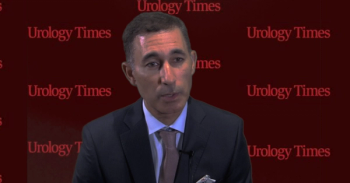
Siamak Daneshmand, MD, discusses the safety profile for TAR-200 from the phase 2b SUNRISE-1 trial, which explored the novel intravesical chemo delivery system in patients with BCG-unresponsive on–muscle-invasive bladder cancer.

“It's a challenge to get funding for these types of studies, and also to have the infrastructure to carry out a lot of these big studies. But there's no question that we need more data,” says Rachel S. Rubin, MD.

“Approaching wellbeing is a shared responsibility,” says Colin P. West, MD, PhD.

"What we found was a very different frequency of alterations in important genes," says Camilo Arenas-Gallo, MD.
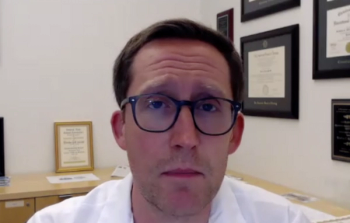
Bradley Gill, MD, MS, recaps several presentations on benign prostatic hyperplasia from the 2023 American Urological Association Annual Meeting in Chicago, Illinois.

“Those who were on this vaginal DHEA had a huge decrease in the prevalence of urinary tract infections in the 1 year after getting the prescription,” says Rachel S. Rubin, MD.

Siamak Daneshmand, MD, discusses initial findings from the phase 2b SUNRISE-1 trial exploring the novel intravesical chemotherapy delivery system TAR-200 in non–muscle-invasive bladder cancer.